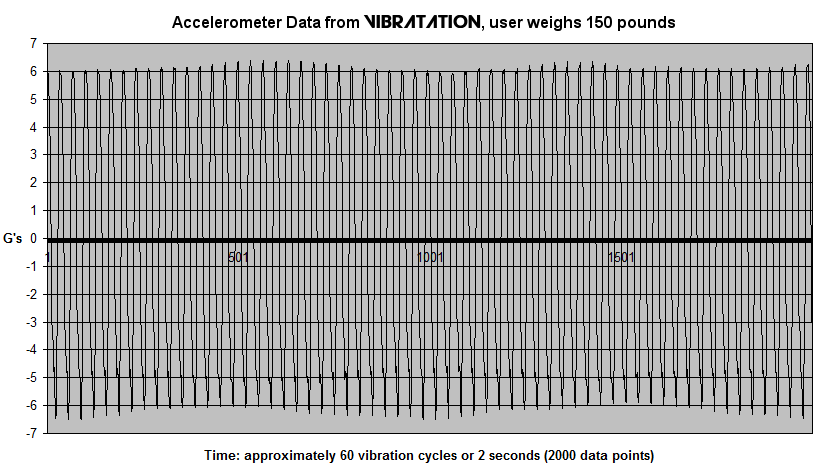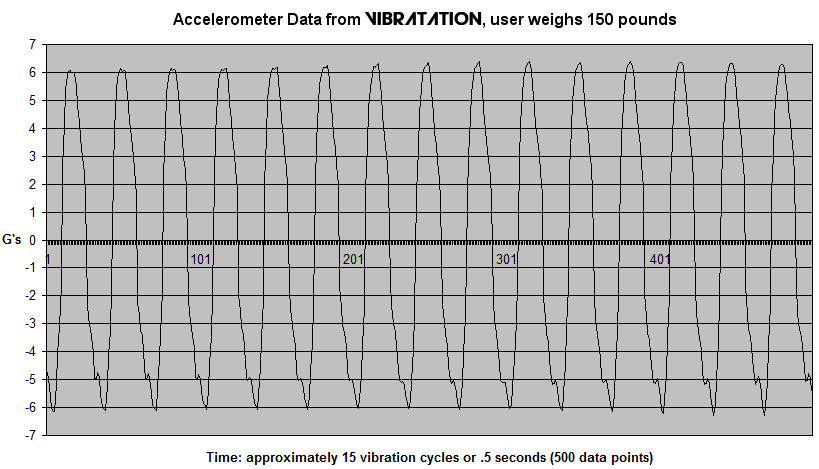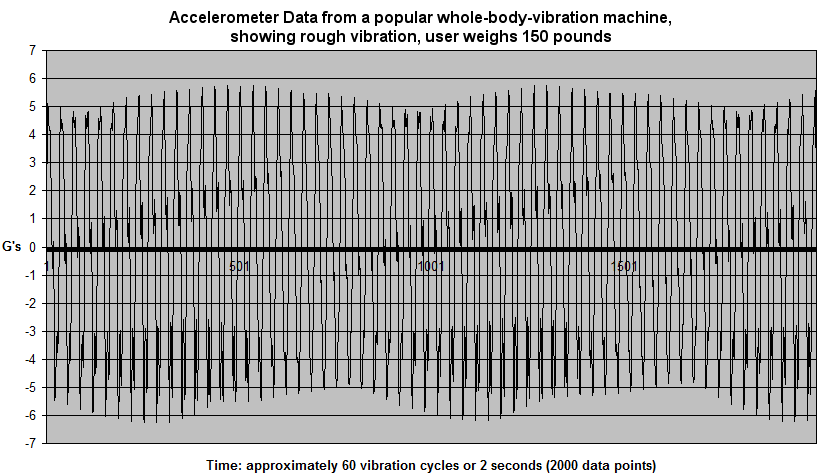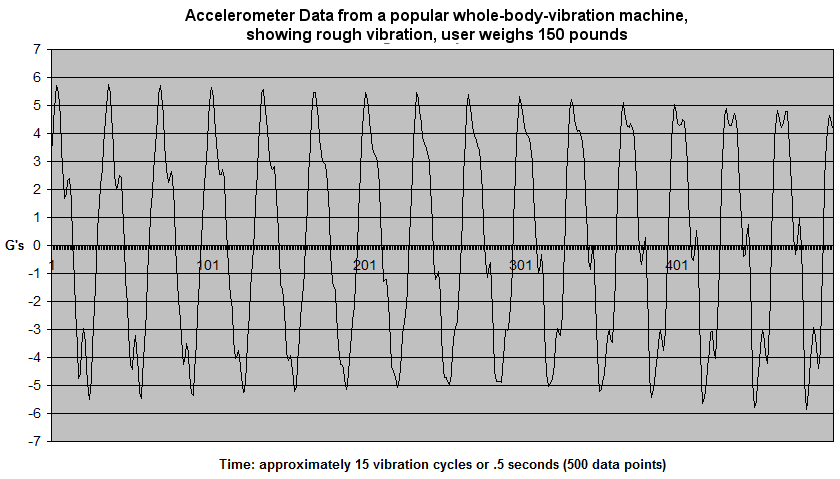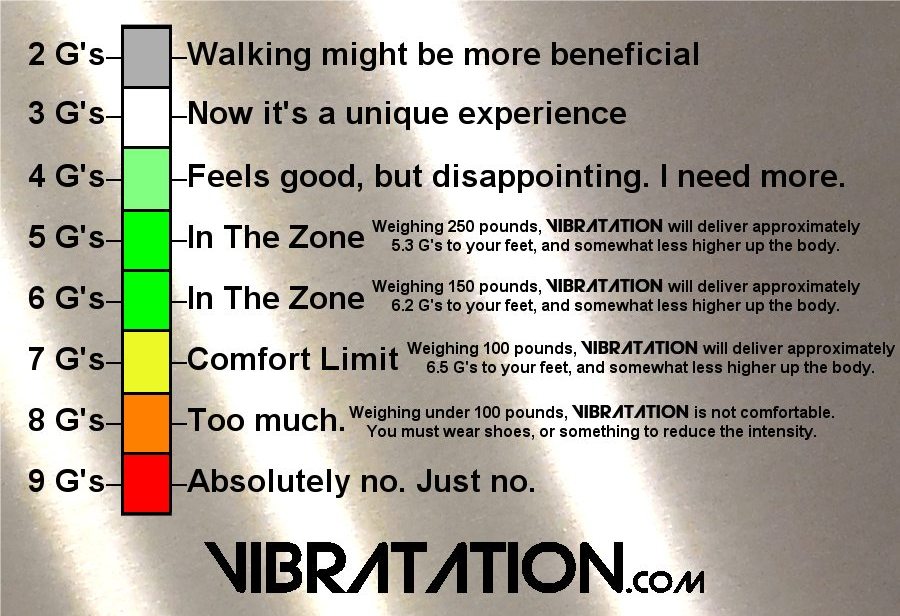Stand on VIBRATATION with an accurate accelerometer placed in the center, you’ll see this for vertical G-force if you weigh around 150 pounds:
If you weigh 200 pounds, peak vibration intensity will decrease by about 0.4G’s, to top-out at 5.8 G’s. Likewise, a 250 pound person will feel a peak intensity of about 5.3 G’s.
Standing on this machine: it sounds monotone. The vibration feels smooth and predictable. Looking closer at this data:
This smooth vibration, contrasts with “rough” vibration when we look below at another linear WBV machine that’s structurally more complex (more parts & less effectively isolated):
Standing on this machine: it sounds a little clanky and pulsating, which are sound-effects of these jagged accelerations and the pronounced wavy shape as overall peak intensity varies due to periodic constructive and destructive interference between out-of-phase frequencies from various parts in this more complex (and more expensive) machine. The vibration literally feels “sharper” because of these jagged peaks.
Again, zooming in for more detail:
I haven’t seen a formal study on whether rough vibration is particularly destructive on the body, joints, cartilage, etc; or even “less effective” in causing a beneficial boost to fluid flow in the body. I suspect smoother is better, just comparing the way I feel after using different machines; but I don’t expect to ever see a study to confirm or deny this. This sort of chart is the fingerprint of a vibration machine.
BUT WHAT IS GOOD?
VIBRATATION is intense and you should use padding under your feet if you weigh less than 150 pounds (68kg):
Basically, once you reach 5 to 6 G’s, more intensity will not produce different or more beneficial WBV effects, in the way that moving up from 3 to 5 G’s feels like a whole new world. What matters once you’re “in the zone” is time spent on the machine. More intensity beyond 7 G’s basically ruins the experience, because it’s too intense to be relaxing.
WHAT THE NUMBERS MEAN
All the numbers above are for acceleration as a ratio of standard Earth gravity (“G-force”), as measured directly on the platform, while a person is standing on it; but not on any part of his or her body. This is important, because some manufacturers will under-rate the performance of their machine by measuring G’s on someone’s body.
- For example, 6 G’s measured on the platform of a WBV machine with someone standing on it, may correspond to 3 G’s when measured on that person’s head, or 2 G’s when measured on the same person’s biceps.
- Measuring acceleration on any body-part is very unreliable. One reason is that vibration intensity will focus in, or move to, a different area depending on how the person is standing: Knees locked; knees bent? Back straight; or slouching? Head tilted forward; or backward?
- The only reliable way is to measure acceleration directly from the machine’s platform, with a person of known weight standing on it.
Some vibration machine marketers claim “our machine produces up to 20G’s” or something stupid like that. That number is the “unloaded acceleration” measured if no one is standing on it. Not useful information. With no weight on a WVB machine, the unloaded acceleration and/or displacement (motion amplitude) will be extreme. The honest way to present this information is to specify the peak acceleration (or peak G’s) that a person will feel when standing straight-up on the machine.
